By Neil E. Wolkodoff, PhD
The explosion of smartwatches has resulted in an awareness of VO2 levels (volume of oxygen used) are important. Most people probably think that measuring endurance abilities is something for pro athletes. The opposite is true – it is more vital for recreational exercisers in terms of fitness and health.
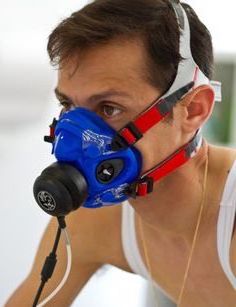
Pro athletes already have excellent fitness levels and use VO2 testing to tweak parts of their program. According to the research, the better your VO2 or endurance, the likelihood that you will live longer and live better increases. Important because recent data indicate that in terms of these levels, only 23% of Americans who exercise get to a level where their endurance profile helps reduce their risk of disease. The chances are 3:1 that any person is not performing endurance exercise to an adequate level. A higher endurance score is a longer, better life, including elevating good cholesterol and oxygenating the brain.
Enter the VO2 test, the best scientific method to measure endurance. It measures the VO2 or volume of oxygen used per minute, customarily expressed as milliliters of oxygen per minute per kilogram (2.2 pounds) of body weight (example: 34 ml/kg/min-1). It is always expressed as a function of weight, so people with varying weights can be compared because there is no advantage to being larger or smaller.

In this test, administered by a trained physiologist or physician, the exerciser is fitted with a special mask and sensor that measures oxygen (O2) consumption, breathing rate, heart rate, and how much carbon dioxide (CO2) is expelled as the primary data points. Either a bike or treadmill is the most common form of VO2 testing.
Submaximal testing (which rarely uses actual or complete measurement equipment), stops well short of maximum effort. It attempts to extrapolate or project from information gained to that point to a VO2 max number. Two problems here – the research is detailed over 30 years that the projections are highly inaccurate for various reasons. Mainly because stopping at the burn point, commonly termed Anaerobic Threshold (AT), can be anywhere from 40-93% of your peak speed. Knowing that number and relationship first establishes exercise that is distance in nature from sprint exercise. That in turn can result in personal training zones by heart rate or other metrics.
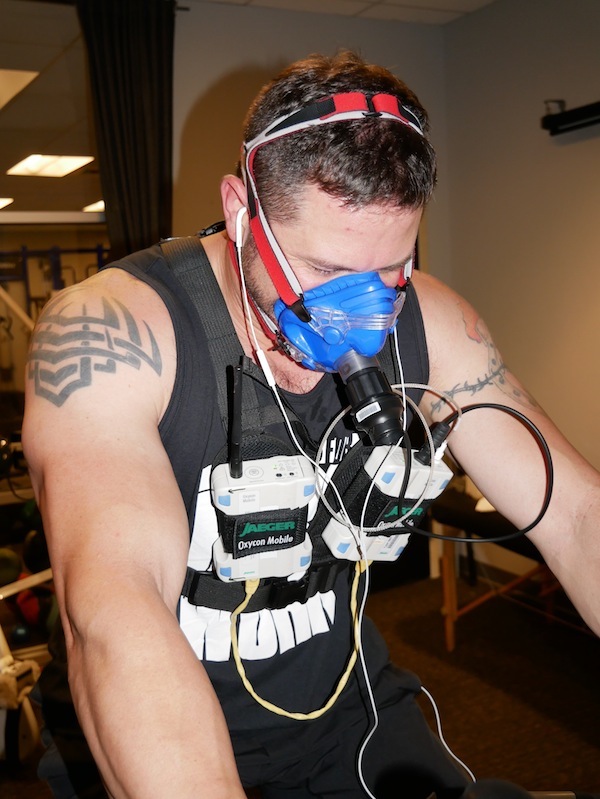
Another issue is that the test asks people to rate perception of effort or exercise feelings to determine testing points where they have little experience. For a marathon runner, the test can be a fraction closer. Submaximal tests can be as simple as ride the bike, type in age, enter finished at the requested point, and the little equation kicks out a projected VO2 number. Sorry, but it is not better than nothing because it is irrelevant and inaccurate. In less common cases, the exerciser can be tethered to a metabolic system. The technician can see when they approach this anaerobic point, stop the test and project a number. This gets closer to knowing the burn point yet remember its’ relationship to max varies by up to 53%.
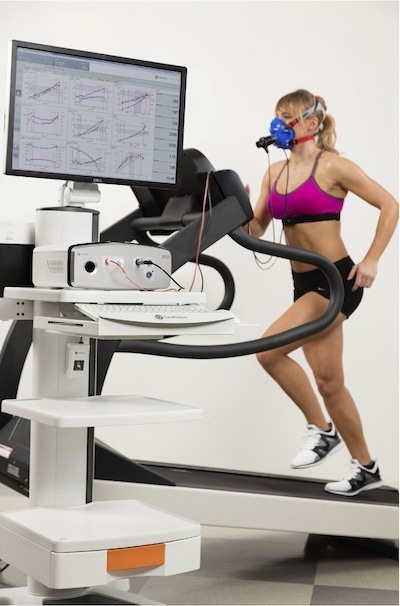
Another common VO2 projection is made via smartwatches. First, they take some limited studies on VO2 and different activities and compare that specific activity. Human energy use is only about 25% efficient. Take a known activity and efficiency ratio, and the watch tries to predict a VO2 score. Once again, no absolute max, and the input equations have proven less than scientific. Sometimes they use heart rate versus activity and assume a lower heart rate means a higher potential VO2 max. It is not uncommon for people at max to be 15% above or 15% below their age-predicted maximum heart rate.
Furthermore, the tracker assumes that everyone’s max HR is 220-age for calculation purposes. In short, fitness trackers do a reasonable job of tracking heart rate during exercise. However, when it comes to actual calories and VO2, they are not accurate.
A real VO2 max test, to maximal effort, with the correct measurement gear, and professional administration, is the only way to know all the applicable information for fitness and health needs.
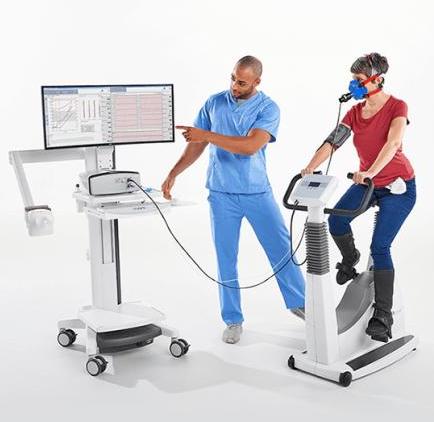
First, max is defined by how much CO2 is expelled compared to O2 consumed. For max, the ratio where CO2 export is at least 10% higher than O2 into the system is defined as a maximal test. This can only be done with gas exchange testing. Asking a person if they are at max is not sufficient in the least. This takes a testing system of a certain level of sophistication and measurement, generally costing at least $33K or more.
Additionally, the tester should be a trained physiologist or physician who has more than book knowledge of how to do a test. In terms of experience, performing at least 500 tests is probably sufficient to see all the variables and situations encountered in the test. The test should only last 9-17 minutes if done correctly. And, the tester should have full insurance, safety procedures, and be trained on a nearby de-fibulator.
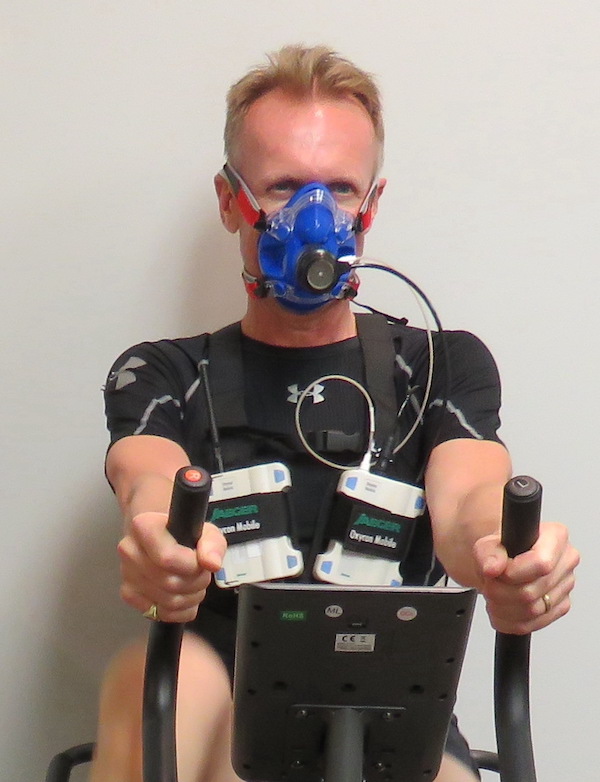
The application points from an actual maximal profile and from a trained physiologist are what sets this apart from any sub-maximal assessment, even if they were accurate, and they are not. First, one needs to have a number to determine if cardio efforts are paying off in terms of warding off disease and improving fitness. Another key derivative is that a trained tester with the right gear can generate training zones specific to personal physiology. Cardio training is most effective if performed right below AT. Aging changes circulatory and respiratory responses to exercise, another reason that a high level of tester training is needed to administer and interpret the test data for optimal application.
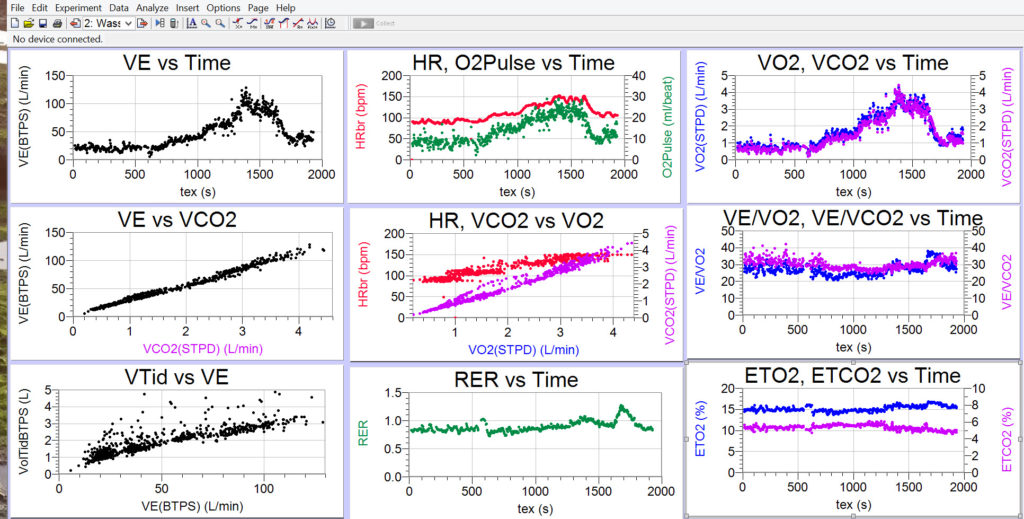
Many people perform resistance training twice per week and ride the bike another three days per week. The VO2 profile will also determine the exact mix of interval training (HIIT is a common term for intervals) versus cardio or endurance training that is best for one’s situation from the profile numbers. Another set of information not available from a sub-max assessment using a projected max or limited data equipment. The data points from the sophisticated measurement metrics in a complete gas exchange test are crucial. The best ratio between cardio and HIIT will result in performance in the weight room increasing.
Is max testing worth the time? If you want to live longer, better, or just increase your performance, this might be the best fitness testing measurement you can perform!
Select References
Albouaini K, Egred M, Alahmar A, Wright DJ. Cardiopulmonary exercise testing and its application. Heart. 2007;93(10):1285-1292.
Bennett H, Davison K, Parfitt G, Eston R. Validity of a perceptually-regulated step test protocol for assessing cardiorespiratory fitness in healthy adults. Eur J Appl Physiol. 2016;116(11-12):2337-2344.
Coquart JB, Garcin M, Parfitt G, Tourny-Chollet C, Eston RG. Prediction of maximal or peak oxygen uptake from ratings of perceived exertion. Sports Med. 2014;44(5):563-578.
Egger F, Blumenauer D, Fischer P, et al. Effects of face masks on performance and cardiorespiratory response in well-trained athletes. Clin Res Cardiol. 2021;1-8.
Ganse B, Degens H. Current Insights in the Age-related Decline in Sports Performance of the Older Athlete. Int J Sports Med. 2021;42(10):879-888.
Hollar DW. Biomarkers of chondriome topology and function: implications for the extension of healthy aging. Biogerontology. 2017;18(2):201-215.
Lenti M, De Vito G, Scotto di Palumbo A, Sbriccoli P, Quattrini FM, Sacchetti M. Effects of aging and training status on ventilatory response during incremental cycling exercise. J Strength Cond Res. 2011;25(5):1326-1332.
MacIntosh BR, MacDougall KB, Falconer TM, Holash RJ. In support of the continued use of the term anaerobic threshold. J Physiol. 2021;599(5):1709-1710.
Mann T, Lamberts RP, Lambert MI. Methods of prescribing relative exercise intensity: physiological and practical considerations. Sports Med. 2013;43(7):613-625.
Matabuena M, Vidal JC, Hayes PR, Huelin Trillo F. A 6-minute sub-maximal run test to predict VO2 max. J Sports Sci. 2018;36(22):2531-2536.
Mezzani A. Cardiopulmonary Exercise Testing: Basics of Methodology and Measurements. Ann Am Thorac Soc. 2017;14(Supplement_1):S3-S11.
Murray AJ. Taking a HIT for the heart: why training intensity matters. J Appl Physiol (1985). 2011;111(5):1229-1230.
Neuberg GW, Friedman SH, Weiss MB, Herman MV. Cardiopulmonary exercise testing. The clinical value of gas exchange data. Arch Intern Med. 1988;148(10):2221-2226.
Poole DC, Rossiter HB, Brooks GA, Gladden LB. The anaerobic threshold: 50+ years of controversy. J Physiol. 2021;599(3):737-767.
Roldán A, Monteagudo P, Cordellat A, Sanchis-Soler G, Blasco-Lafarga C. Inspiratory Muscle Strength and Cardiorespiratory Fitness Association With Health-Related Quality of Life in Healthy Older Adults. Front Sports Act Living. 2021;3:624947.
Shcherbina A, Mattsson CM, Waggott D, Salisbury H, Christle JW, Hastie T, Wheeler MT, Ashley EA. Accuracy in Wrist-Worn, Sensor-Based Measurements of Heart Rate and Energy Expenditure in a Diverse Cohort. Journal of Personalized Medicine. 2017; 7(2):3.
Strasser B, Burtscher M. Survival of the fittest: VO2max, a key predictor of longevity?. Front Biosci (Landmark Ed). 2018;23:1505-1516.